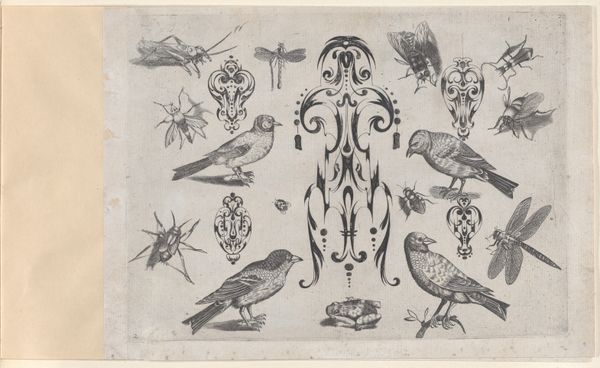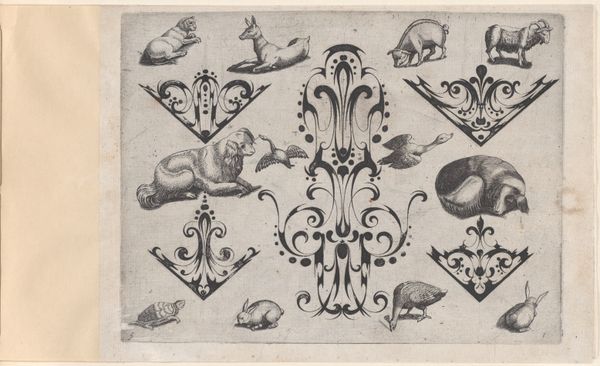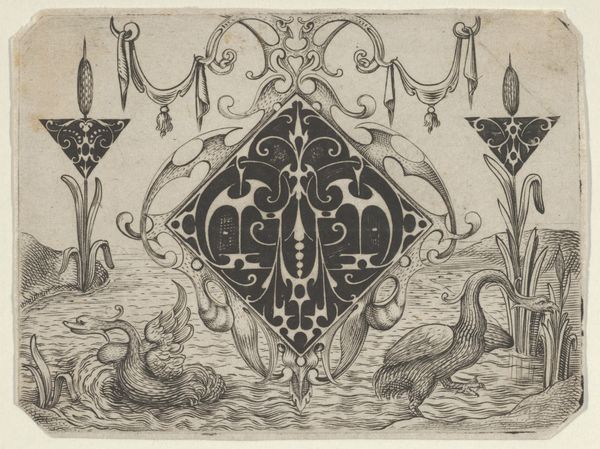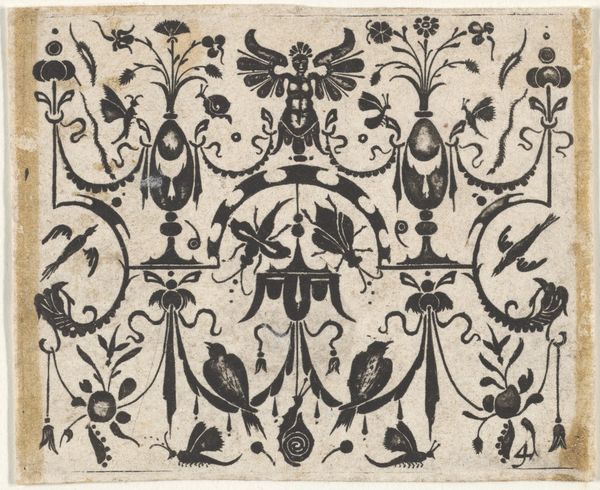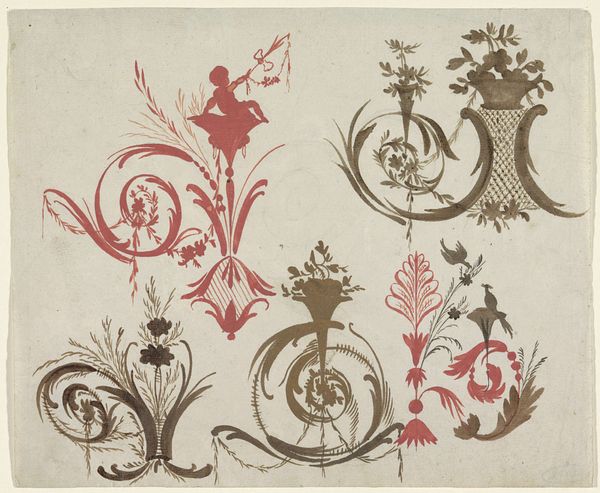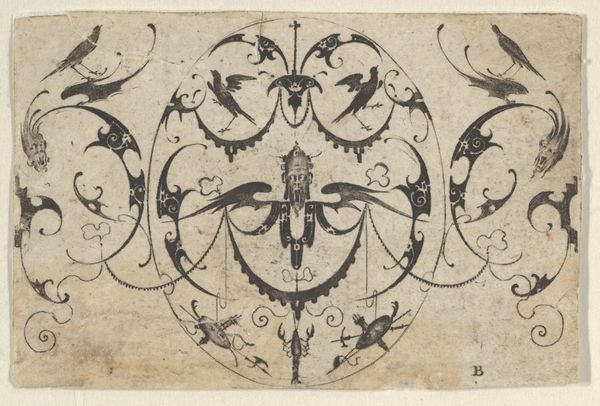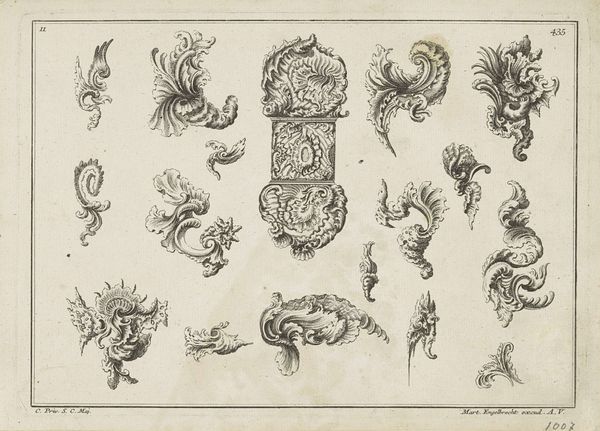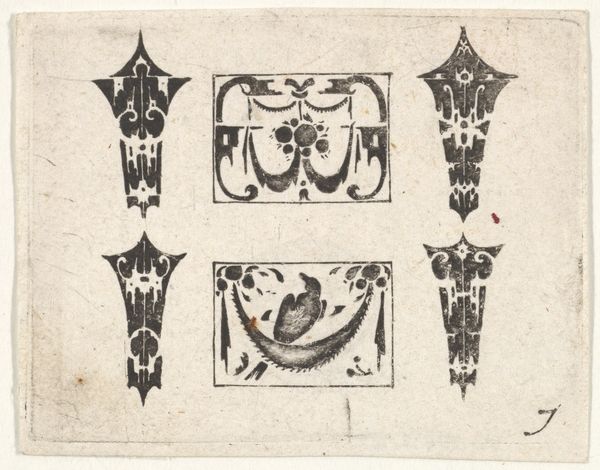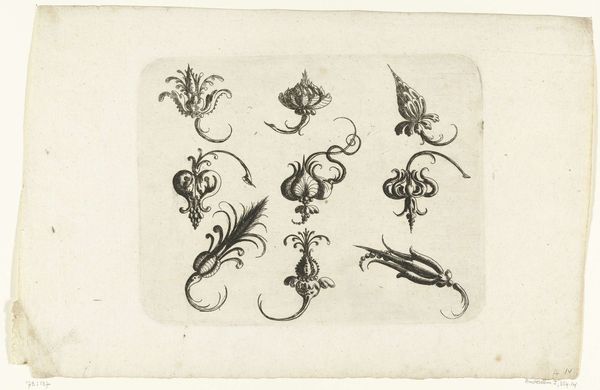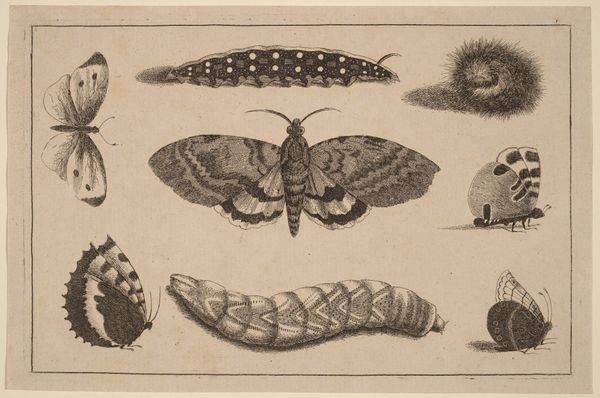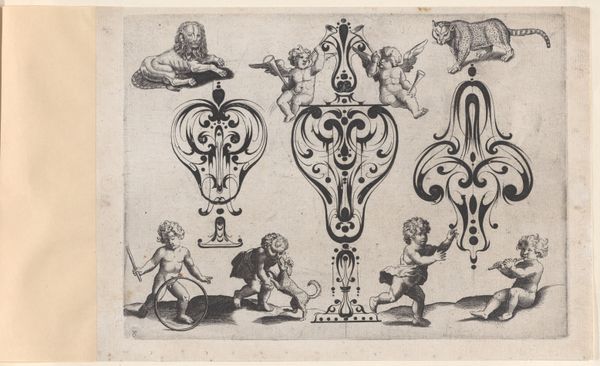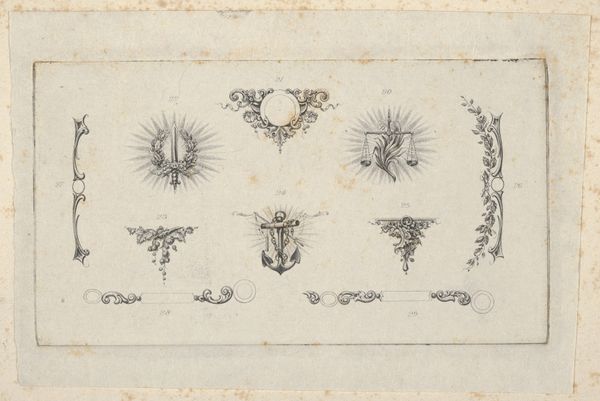
Blackwork Designs with Acrobats, Butterflies and Other Insects, Plate 3 from a Series of Blackwork Ornaments combined with Figures, Birds, Animals and Flowers 1622
0:00
0:00
drawing, print, etching, ink, engraving
#
drawing
# print
#
etching
#
figuration
#
ink
#
engraving
Dimensions: 7 3/4 × 11 7/16 × 1/8 in. (19.7 × 29 × 0.3 cm) Plate: 5 13/16 × 7 7/8 in. (14.8 × 20 cm)
Copyright: Public Domain
Editor: This is "Blackwork Designs with Acrobats, Butterflies and Other Insects," a print from 1622 by Meinert Gelijs, rendered in etching, engraving, and ink. It's incredibly intricate, almost dizzying with the sheer density of images. What is your interpretation of it? Curator: It's a fascinating example of early 17th-century ornamental prints. The combination of flora, fauna, and acrobatic figures suggests a complex visual language. The blackwork style itself, traditionally associated with embroidery, highlights the growing importance of printed designs for other crafts. Considering its historical context, how do you think a piece like this would have been received in its time? Editor: I imagine it served as a kind of pattern book. So, it was less about "art" and more about practical use? Curator: Precisely. These prints played a significant role in disseminating design ideas across Europe. It blurs the lines between high art and decorative craft, which in turn tells us a lot about the social role of images. Who decided what images could be shared, who the customer was, and how these images moved across social classes? Editor: That's really interesting; I hadn't considered its circulation beyond an art context. Did the acrobats and insects carry symbolic weight, or were they just part of the aesthetic? Curator: Symbolism was often layered in this period, often changing from artist to artist and location to location. Consider how these acrobatic figures relate to the ornamental design itself. Does it look familiar from any designs you may have recently studied? Editor: Yes! This imagery can also be found in many pieces of furniture throughout this same period, from cabinets to high-back chairs. Curator: Exactly, this gives you a sense of the time and use of such ornaments across various classes. Editor: I'll never look at ornamental prints the same way again. Seeing them as a form of early information sharing completely shifts my perspective. Curator: Indeed. By exploring these historical, social, and economic contexts, we can unlock a richer understanding of art's function in society.
Comments
No comments
Be the first to comment and join the conversation on the ultimate creative platform.
